Pisa is a city in Italy that is home to a variety of birds. From common backyard species to endangered species, birds of all varieties are found throughout the city.
The hills of Pisa are home to a wide range of birds, including crows, starlings, finches, sparrows, and many more. The coastal areas of Pisa are also home to a wide variety of coastal and sea birds, including gulls, terns, and egrets.
Pisa is also home to many rare and endangered species, such as the Eurasian eagle owl and the black kite. These species are carefully protected in the city, making it a great destination for bird watchers.
With its varied landscapes and diverse bird population, Pisa is a great place to observe and enjoy birds in their natural habitat.
1. Eurasian Collared Dove
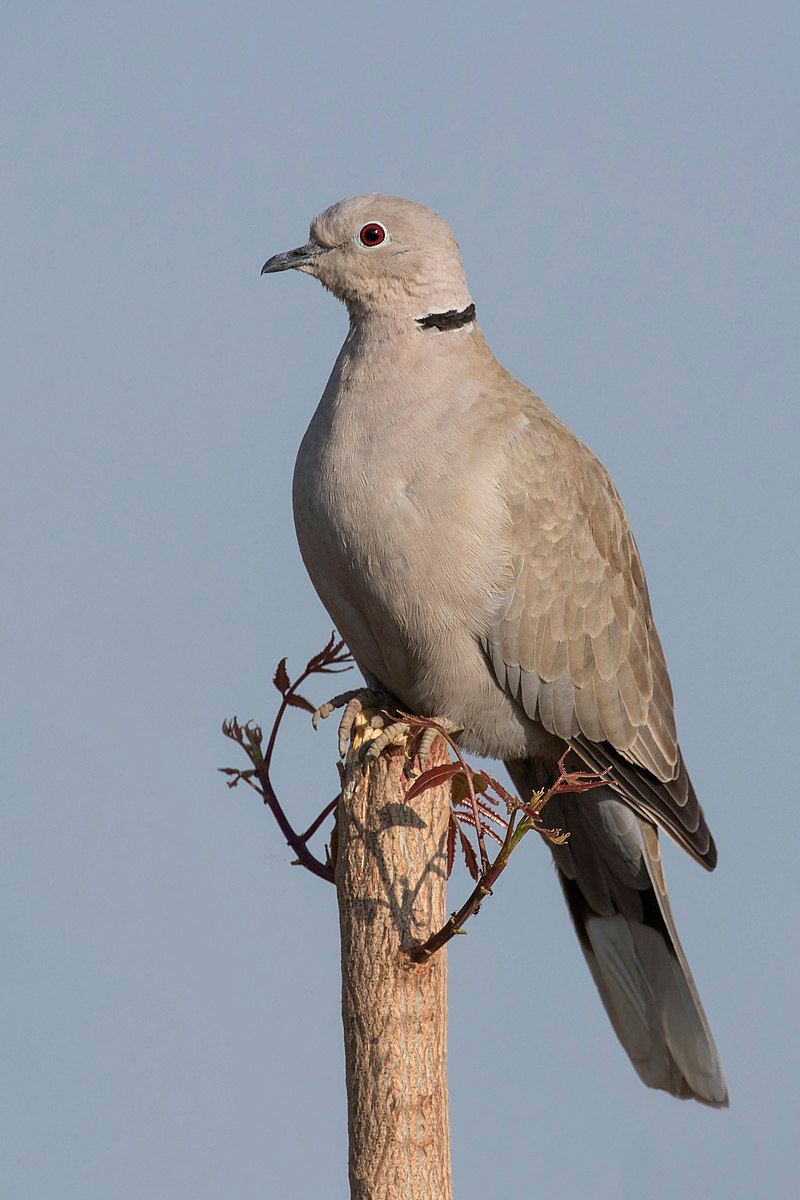
The Eurasian collared dove is a species of dove native to Europe and Asia. It has since been introduced to Japan, North America, and several islands in the Caribbean as well. This species has a wide global range and is experiencing an increasing population trend.
As a result, the IUCN Red List has listed it as a species of Least Concern since 2014. This means that this species is not currently facing any major threats, and its population is stable enough for conservation efforts to focus on other species.
The Eurasian collared dove is a resilient species that has adapted well to its new habitats, making it a successful species that is able to thrive in various places around the world.
| Kingdom | Animalia |
| Phylum | Chordata |
| Class | Aves |
| Order | Columbiformes |
| Family | Columbidae |
| Genus | Streptopelia |
| Species | S. decaocto |
2. European Turtle Dove
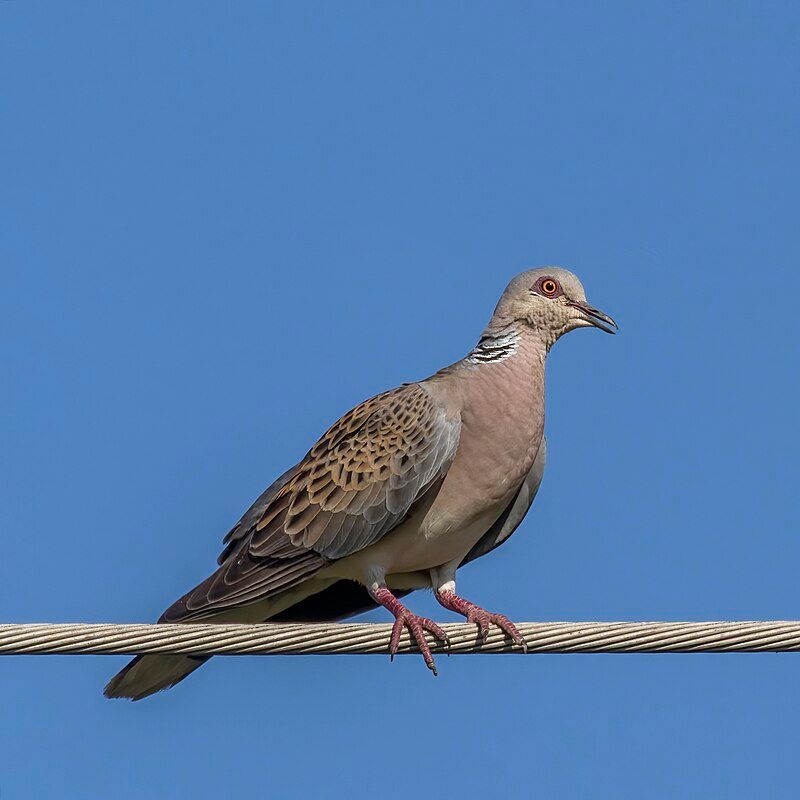
The European turtle dove is a species of bird belonging to the family Columbidae, which includes doves and pigeons. This species is found in a wide area across the southwestern Palearctic region, stretching from North Africa to many parts of the Mediterranean.
During the winter months, these birds migrate south to northern sub-Saharan Africa, where they can find more favourable climates. The European turtle dove is a small-sized bird, typically measuring around 22-25 cm in length.
Its plumage is a mix of grey, brown and white, with a few black markings on its wings.
Its most distinctive feature is its long, pointed tail, which is usually slightly darker than the rest of its body. The European turtle dove is a migratory species, with most of the population leaving its breeding grounds in the Palearctic region in late summer or autumn.
This species has been recorded as travelling as far south as South Africa and even Madagascar during its migration.
The European turtle dove’s wintering grounds are usually in the northern parts of sub-Saharan Africa, where it can find better climates and more food sources. The European turtle dove’s diet consists mainly of seeds and fruits, which it can find in its breeding and wintering grounds.
It also feeds on insects and worms, which it finds on the ground or in tree canopies. The European turtle dove is a widespread species, and its population is considered to be stable.
However, its declining numbers in some parts of Europe have raised concerns among conservationists, and it is now listed as a species of least concern by the International Union for Conservation of Nature (IUCN).
| Kingdom | Animalia |
| Phylum | Chordata |
| Class | Aves |
| Order | Columbiformes |
| Family | Columbidae |
| Genus | Streptopelia |
| Species | S. turtur |
3. Common Wood Pigeon
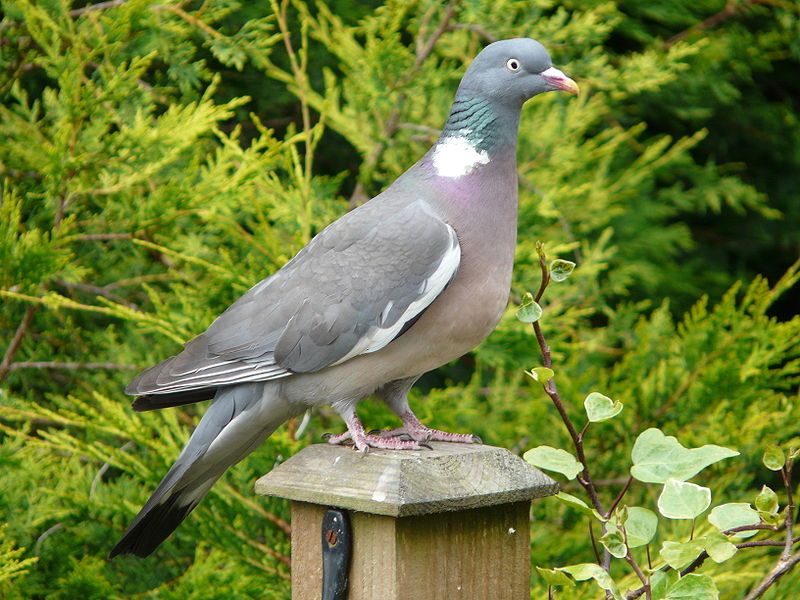
The common wood pigeon is a species of dove and pigeon native to the western Palearctic region. It is the largest species in the family and belongs to the genus Columba. This genus also contains closely related species such as the rock dove.
The common wood pigeon is usually identified by its large size, blue-grey plumage, and white patches on its wings and neck. It usually lives in forests, woodlands, parks, and gardens, and feeds on grains, fruits, and other vegetation.
The common wood pigeon is a social species and can often be seen in flocks, particularly at feeding sites. They have a complex communication system and are able to create many different calls to communicate with each other.
They have a strong homing instinct and are able to return to their nests with great accuracy. The common wood pigeon is an important species in the ecosystem, providing food for predators and dispersing seeds through their droppings.
| Kingdom | Animalia |
| Phylum | Chordata |
| Class | Aves |
| Order | Columbiformes |
| Family | Columbidae |
| Genus | Columba |
| Species | C. palumbus |
4. Rock Dove
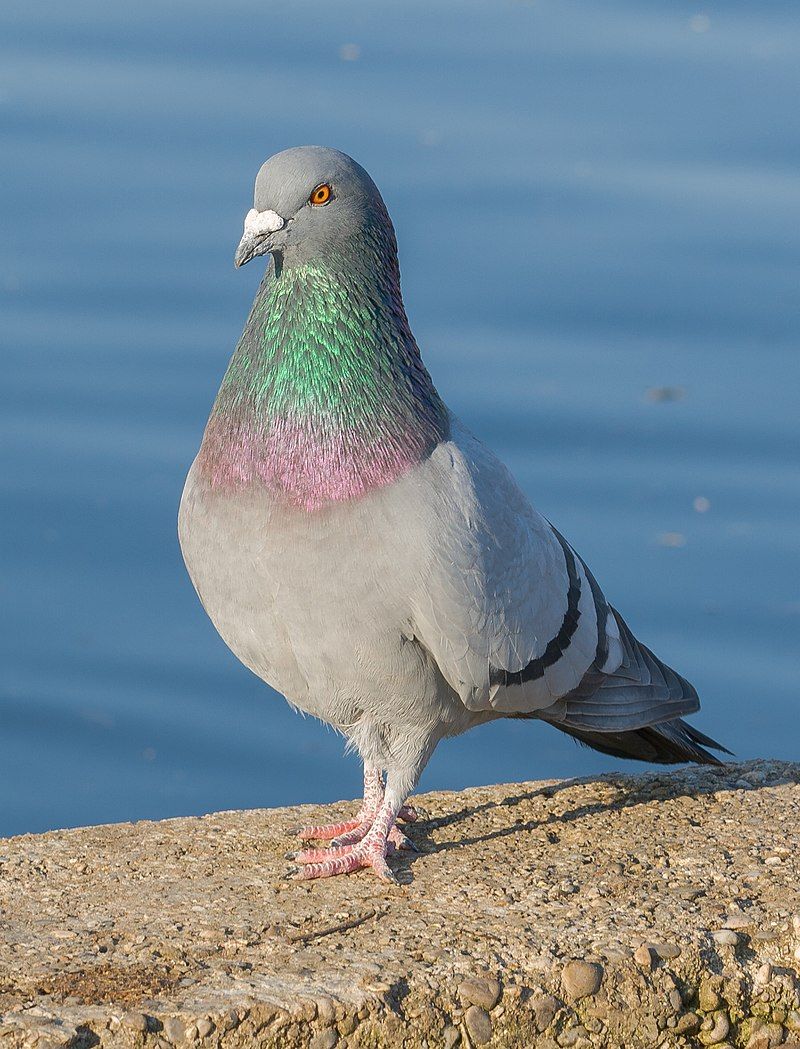
The rock dove, rock pigeon, or common pigeon is a bird native to the Columbidae family. It is widely referred to as the “pigeon” in everyday conversation. This species is the ancestor of the domestic pigeon, which is found in homes and parks around the world.
Over time, domestic pigeons have escaped and their numbers have grown, resulting in the creation of feral pigeon populations. These feral pigeons can be found in many countries, making the rock dove one of the most widespread bird species in the world.
| Kingdom | Animalia |
| Phylum | Chordata |
| Class | Aves |
| Order | Columbiformes |
| Family | Columbidae |
| Genus | Columba |
| Species | C. livia |
5. Mallard
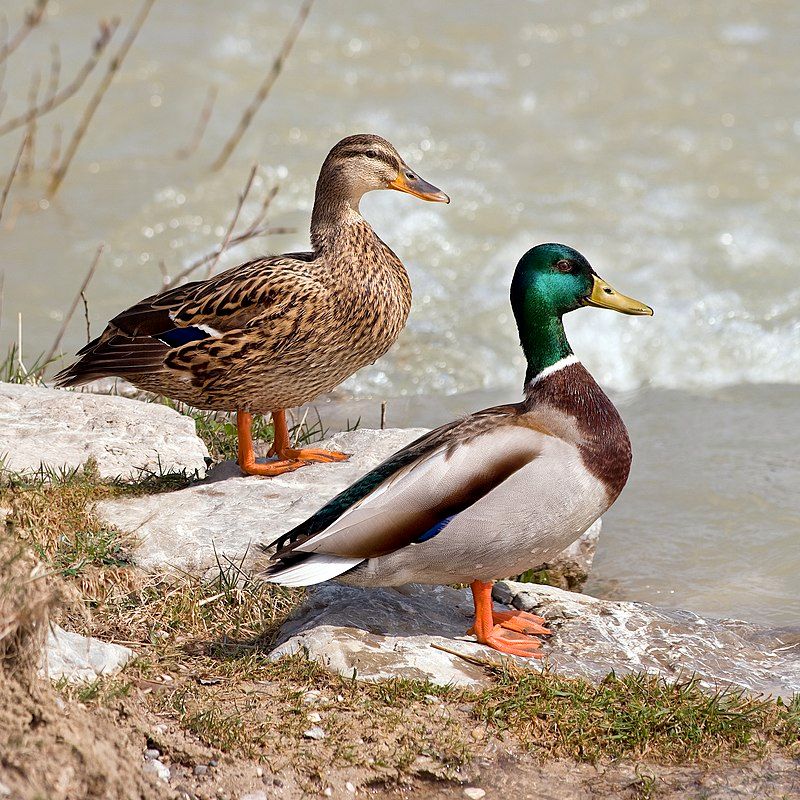
The mallard, or wild duck, is a species of duck that is found in a wide range of habitats throughout the world. It is a dabbling duck, meaning that it prefers to feed in shallow waters and can often be seen skimming the surface of ponds and lakes.
It breeds in both temperate and subtropical regions of the Americas, Eurasia, and North Africa.
It has also been introduced to other parts of the world, such as New Zealand, Australia, Peru, Brazil, Uruguay, Argentina, Chile, Colombia, the Falkland Islands, and South Africa. The mallard is an incredibly adaptable species that can live in a variety of different ecosystems.
They can be found in urban areas, wetlands, grasslands, and even in coastal areas. Their diet consists primarily of aquatic plants, invertebrates, and small fish.
They are also very social animals and can be seen in large flocks during the breeding season. The mallard is a popular species for recreational hunting, with millions of birds being shot each year.
This has caused some concern for conservationists, as it has caused a decline in some populations. However, the species is still abundant in many areas and remains a common sight in many parts of the world.
| Kingdom | Animalia |
| Phylum | Chordata |
| Class | Aves |
| Order | Anseriformes |
| Family | Anatidae |
| Genus | Anas |
| Species | A. platyrhynchos |
6. Eurasian Wigeon
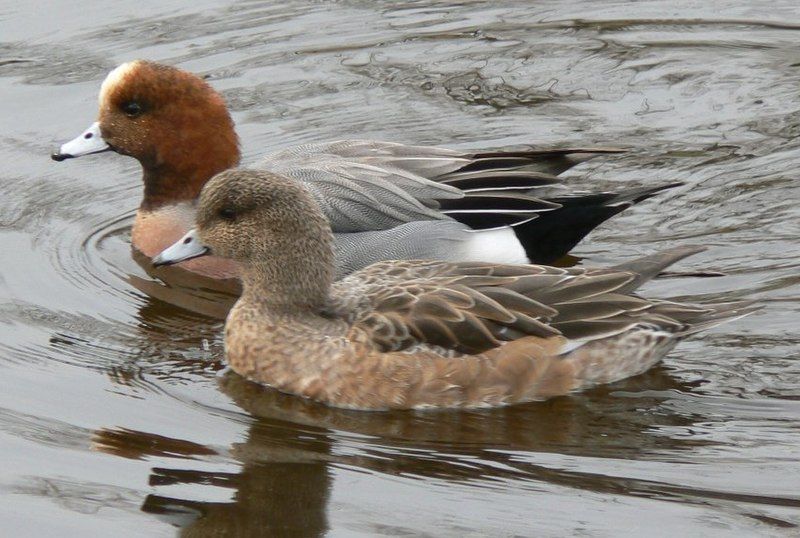
The Eurasian wigeon, also known as the European wigeon, widgeon or just wigeon, is a species of duck belonging to the genus Mareca. It is native to the Palearctic region, which includes parts of Europe, Asia, and Africa.
The Eurasian wigeon is very common and widespread within its range and can be found in a variety of habitats such as wetlands, rivers, lakes, and estuaries. Its diet consists of a variety of vegetation, such as grasses, sedges, and aquatic plants.
The Eurasian wigeon is a dabbling duck, meaning it dives its head underwater to feed, while its body remains afloat. It also has a distinctive white patch on its forehead, and its wings are speckled with white and brown patches.
The Eurasian wigeon is a migratory species and can be seen in large flocks during the winter months.
| Kingdom | Animalia |
| Phylum | Chordata |
| Class | Aves |
| Order | Anseriformes |
| Family | Anatidae |
| Genus | Mareca |
| Species | M. penelope |
7. Eurasian Teal
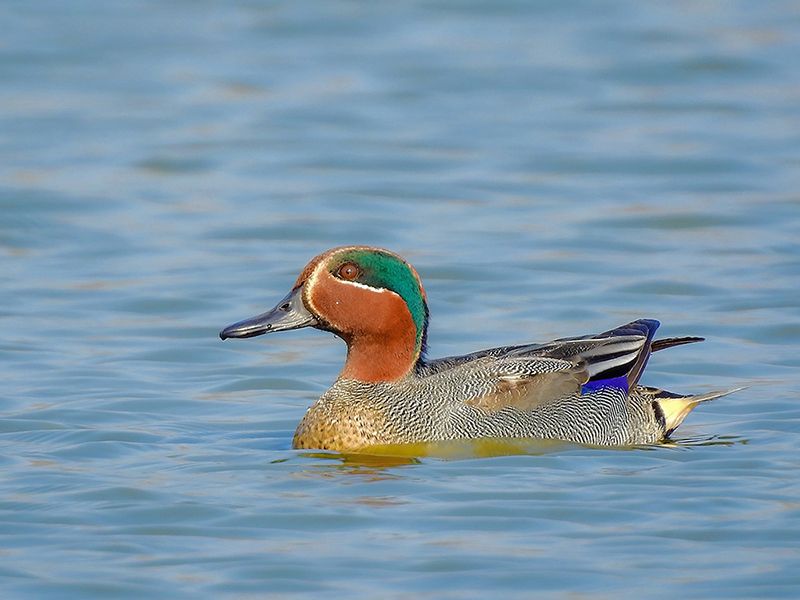
The Eurasian teal is a species of duck that is found across a wide area of temperate Europe and Siberia. It is a migratory species, and it moves south in winter to escape the harsh weather in northern regions.
The Eurasian teal is sometimes referred to simply as the teal, as it is the only one of its kind in much of its range. This species of duck is considered to be quite common and widespread, and it breeds in temperate Eurosiberia.
The Eurasian teal is a small dabbling duck, and it has greenish-grey plumage with a white underside. Its head is chestnut-colored, and it has a white eye stripe that runs across its face.
The Eurasian teal is a social species, and it is often found in flocks during its migrations. It is an omnivorous species, and its diet consists of small aquatic invertebrates, aquatic plants, and other plant material.
| Kingdom | Animalia |
| Phylum | Chordata |
| Class | Aves |
| Order | Anseriformes |
| Family | Anatidae |
| Genus | Anas |
| Species | A. crecca |
8. Cuculus Canorus
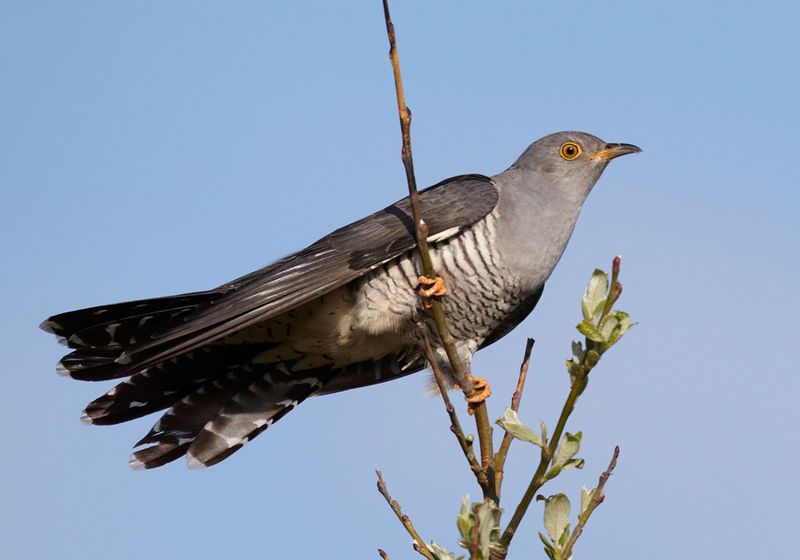
The common cuckoo is a species of bird that is a part of a larger order of birds called the Cuculiformes. This order includes several other species, such as roadrunners, anis, and coucals.
The common cuckoo is a migratory bird and is found in Europe and Asia during the summer months.
During the winter, it migrates to Africa. The common cuckoo is a fairly common sight in Europe and Asia during the summer months, as it migrates there from its wintering grounds in Africa. It is a large bird that is easily spotted in the sky or in trees.
It has a distinctive call that is often heard during the summer months. The common cuckoo is an important part of the bird population in Europe and Asia. It is a voracious consumer of caterpillars and other insects, helping to control the insect population in the area.
It is also a popular bird for birdwatchers, as it is easily spotted and identified. Overall, the common cuckoo is an important part of the avian population in Europe and Asia. It is a migratory species that travels between its summer and winter homes in Africa.
It plays an essential role in controlling the insect population, and its distinctive call is a familiar sound during the summer months.
| Kingdom | Animalia |
| Phylum | Chordata |
| Class | Aves |
| Order | Cuculiformes |
| Family | Cuculidae |
| Genus | Cuculus |
| Species | C. canorus |
9. Eurasian Coot
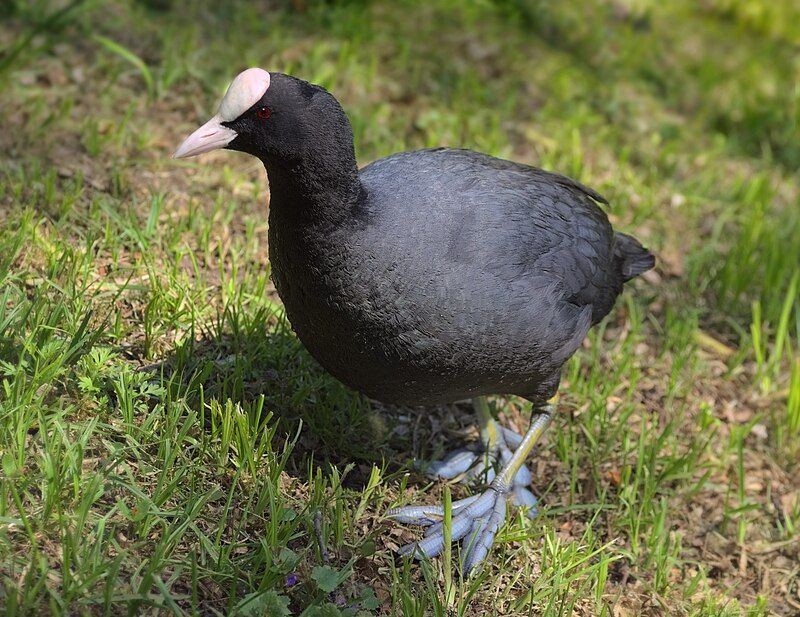
The Eurasian coot, also known as the common coot or Australian coot, is a species of water bird that belongs to the Rallidae family. It is found in Europe, Asia, Australia, New Zealand, and some parts of North Africa.
It is characterized by its slaty-black body, glossy black head, and white bill with a white frontal shield. The Eurasian coot is a common sight in wetlands, lakes, ponds, and slow-moving rivers. They are quite social and often found in large flocks.
They feed on aquatic plants and small creatures like fish, crustaceans, and insects. Furthermore, they are strong swimmers and agile divers, which allows them to reach food in deeper waters. The Eurasian coot breeds between March and July.
They build their nests close to the water, using vegetation, reeds, and other materials to construct a floating platform. The female typically lays four to eight eggs, which both parents take turns incubating.
After hatching, the chicks are able to leave the nest after about three days and can fly after around two weeks. The Eurasian coot is a unique species of water bird that is found in various parts of the world.
They are easily identifiable by their black body, glossy black head, and white bill with a white frontal shield. With strong swimming and diving skills, they are able to feed on aquatic plants and small animals.
They also build their nests close to the water and both parents take turns incubating the eggs.
| Kingdom | Animalia |
| Phylum | Chordata |
| Class | Aves |
| Order | Gruiformes |
| Family | Rallidae |
| Genus | Fulica |
| Species | F. atra |
10. Northern Pintail
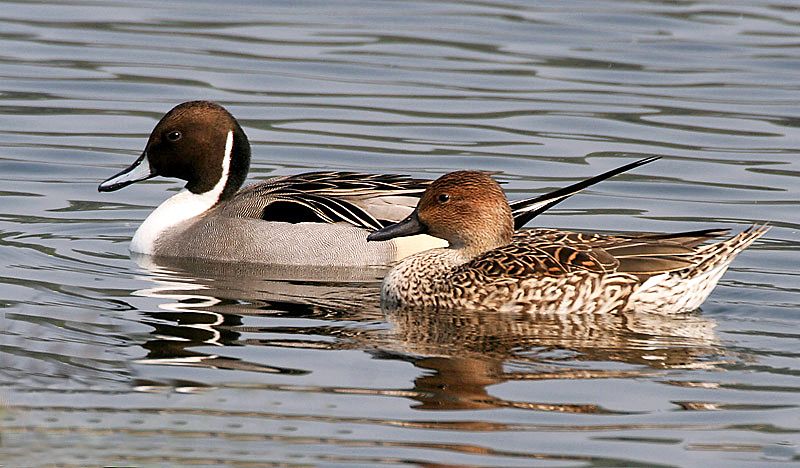
The pintail or northern pintail is a species of duck that is widely distributed across the Palearctic and North American regions. It breeds in the northern areas of Europe and also migrates south during the winter season to as far as the equator.
This bird species is a long-distance migrator, with some travelling thousands of miles to reach its wintering grounds. Its breeding grounds are mainly found in wetland habitats, such as marshes, wet meadows and bogs.
During the breeding season, they are usually found in flocks on the open water, and they feed on aquatic plants and small invertebrates. In the winter, they congregate in large flocks on sheltered waters and feed on seeds and grain.
The northern pintail is a graceful and elegant bird, easily identified by its long, pointed tail. They are also popular in falconry, with their fast-flying and agile manoeuvres making them ideal quarry.
| Kingdom | Animalia |
| Phylum | Chordata |
| Class | Aves |
| Order | Anseriformes |
| Family | Anatidae |
| Genus | Anas |
| Species | A. acuta |
11. Common Pochard
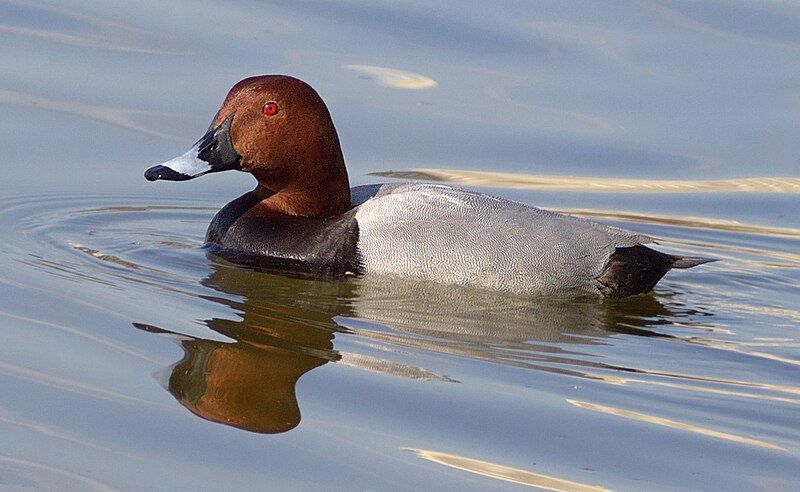
The common pochard is a medium-sized diving duck that inhabits various parts of the world. Its scientific name, Aythya ferina, is derived from Greek and Latin words. The Greek word aithuia is taken from Hesychius and Aristotle, and it is used to refer to an unidentified seabird.
The Latin word ferina is derived from “ferus” which means “wild” and it is used to refer to wild game. This indicates that the common pochard is a wild bird that can be found in both freshwater and seawater habitats and is an important species in the duck family.
The common pochard is known for its fast and erratic flight, and its ability to dive deeply in order to feed. Its diet consists of a variety of aquatic plants and invertebrates, such as crustaceans, molluscs, and insects. It also feeds on small fish and aquatic larvae.
The common pochard is an important and integral species in the duck family, and it is a species of conservation concern due to its declining populations in some parts of the world.
| Kingdom | Animalia |
| Phylum | Chordata |
| Class | Aves |
| Order | Anseriformes |
| Family | Anatidae |
| Genus | Aythya |
| Species | A. ferina |
12. Ring-Necked Pheasant
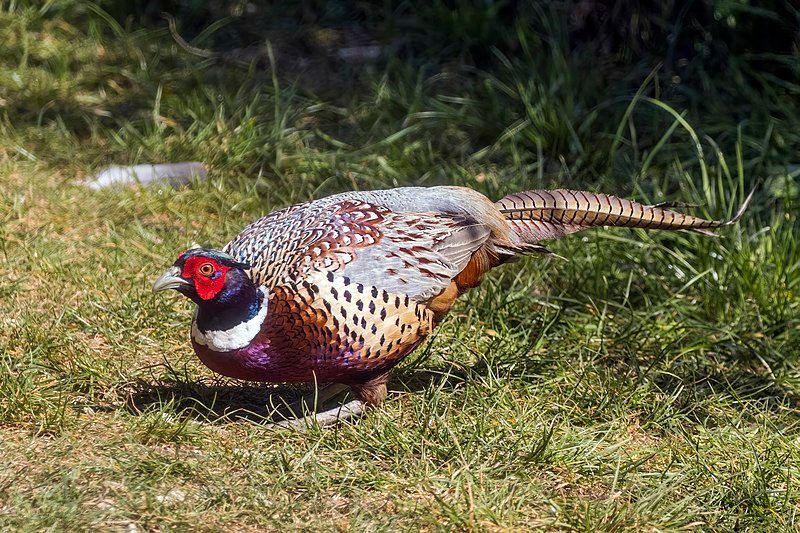
The common pheasant is a species of bird that belongs to the pheasant family. Its scientific name, Phasianus colchicus, is derived from Latin, with Phasianus meaning “pheasant” and colchicus referring to the country of Colchis located on the Black Sea coast.
This is where the pheasant species was first identified by Europeans. The common pheasant has a wide distribution, inhabiting grasslands, savannas, and open woodland areas. Its plumage is typically brown or grey with a metallic sheen.
The male of the species is often more brightly colored than the female, with distinct markings on its tail feathers. It is a ground-dwelling bird, feeding mostly on grains, seeds, and insects. The common pheasant is also hunted for sport and food in many parts of the world.
| Kingdom | Animalia |
| Phylum | Chordata |
| Class | Aves |
| Order | Galliformes |
| Family | Phasianidae |
| Genus | Phasianus |
| Species | P. colchicus |
13. Stock Dove
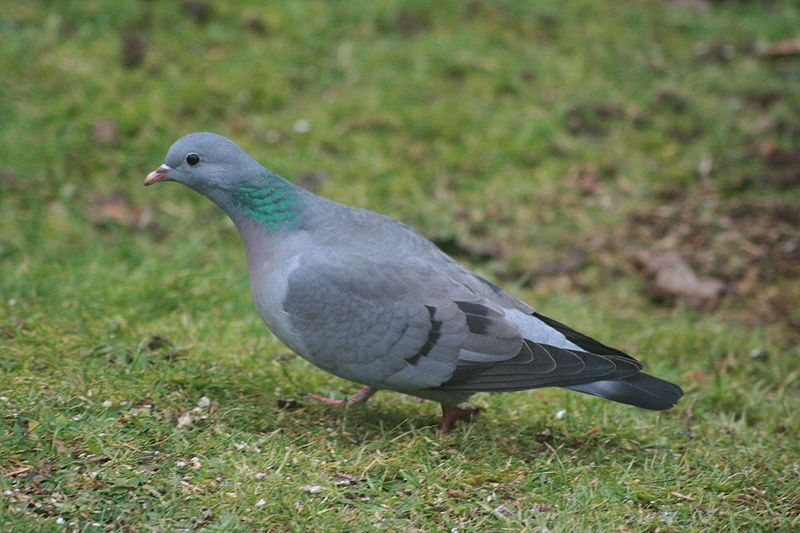
The stock dove, also known as the stock pigeon, is a member of the Columbidae family. This family includes all doves and pigeons.
The stock dove is widely distributed in the western Palearctic, which is an area of the Northern Hemisphere that includes Europe, North Africa, and parts of Southwest Asia.
The stock dove is a medium-sized bird, with a gray body, a white neck ring, and black-and-white spotted wings. Its wingspan is around 40 centimeters, and its length is around 32 centimeters.
This bird is usually seen in pairs or small groups and is usually active during the day. The stock dove feeds on grains, fruits, and insects. It nests in trees, rock crevices, and on cliffs.
The female usually lays two white eggs in a simple nest, and both parents take part in incubating them. The stock dove is an important part of the Columbidae family.
Its wide distribution makes it a valuable species, and it is also an important food source for a variety of predators, such as birds of prey and foxes.
| Kingdom | Animalia |
| Phylum | Chordata |
| Class | Aves |
| Order | Columbiformes |
| Family | Columbidae |
| Genus | Columba |
| Species | C. oenas |
14. Grey Heron
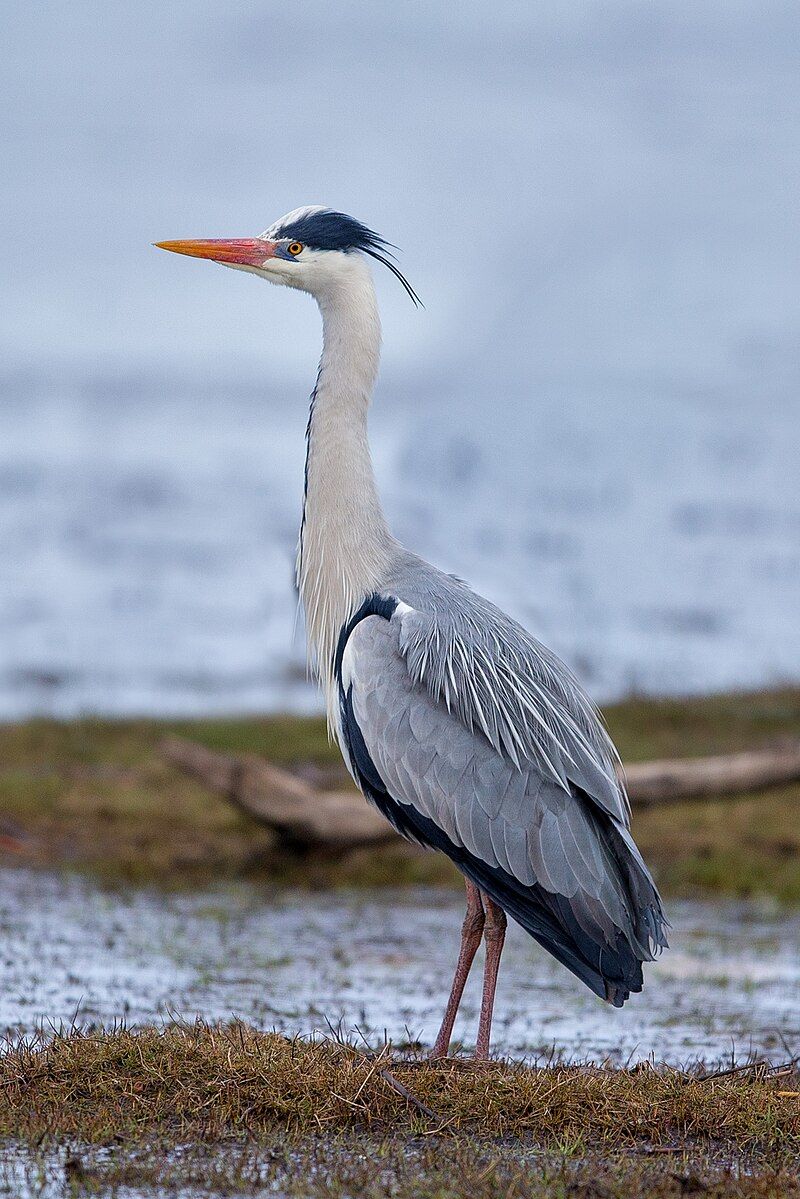
The grey heron is a majestic water bird belonging to the Ardeidae family, which is native to temperate regions of Europe, Asia, and Africa. It is a long-legged bird, adapted for wading in shallow water to search for fish and other aquatic prey.
Typically, the grey heron is a resident species in much of its range, but some populations of the species from the more northern parts of its range migrate southwards in autumn or winter.
This is mainly done to seek warmer climates during the colder months, as well as to take advantage of new food sources. The grey heron is a large bird, with a wingspan of up to 3 feet, and a body length of up to 4 feet.
Its plumage is predominantly grey, with white underparts, a white neck, and a yellowish bill. The species is mostly silent, but will sometimes emit a low croaking sound.
The grey heron is an opportunistic feeder and will hunt a wide variety of prey, including fish, amphibians, reptiles, small mammals, and large insects. The grey heron is an important species for wetland conservation and is a protected species in many countries.
| Kingdom | Animalia |
| Phylum | Chordata |
| Class | Aves |
| Order | Pelecaniformes |
| Family | Ardeidae |
| Genus | Ardea |
| Species | A. cinerea |
15. Common Swift
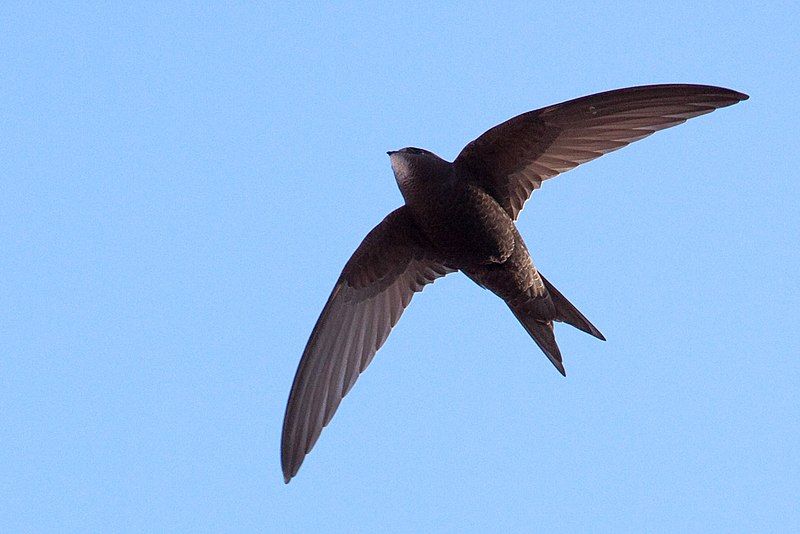
The common swift is a medium-sized bird that is distinct from barn swallows and house martins, though it may appear similar.
This resemblance is due to convergent evolution, which is a process in which two distinct species develop similar features in order to adapt to the same environment.
In the case of the common swift, it has evolved to look similar to the barn swallow and house martin despite not being related to either species. This is because they have all adapted to similar environments, which has led to their similar physical characteristics.
The common swift belongs to the order Apodiformes, which is separate from the passerine species to which the barn swallow and house martin belong.
| Kingdom | Animalia |
| Phylum | Chordata |
| Class | Aves |
| Clade | Strisores |
| Order | Apodiformes |
| Family | Apodidae |
| Genus | Apus |
| Species | A. apus |
16. Greylag Goose
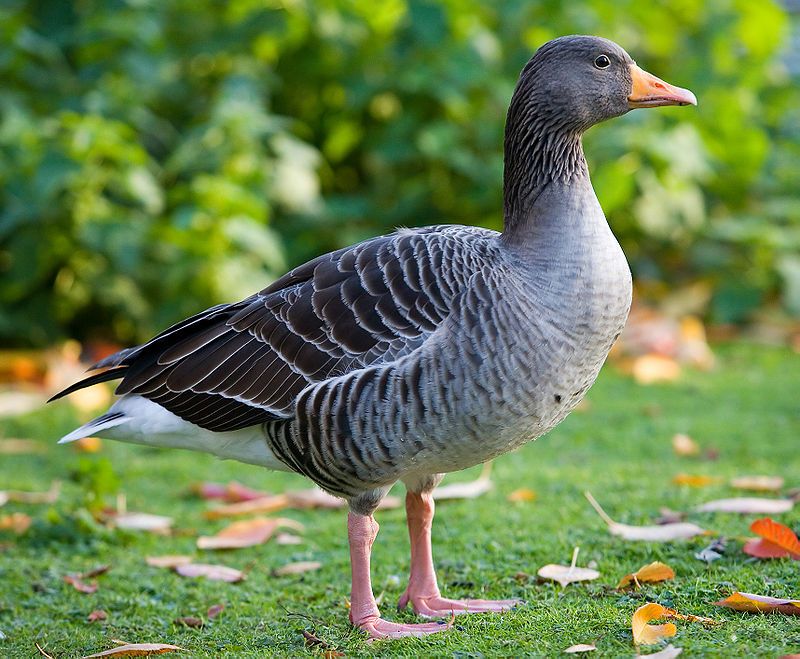
The Greylag Goose, also known as the Graylag Goose, is a species of large goose belonging to the waterfowl family Anatidae. It is also the type species of the genus Anser. The Greylag Goose has a distinctive plumage of mottled and barred grey and white feathers.
Its beak and legs are distinctive too, being a bright orange and pink respectively. This makes it easy to distinguish the Greylag Goose from other species of goose. The Greylag Goose can be found in wetlands, muddy fields and shallow lakes.
It is also known to migrate over large distances, making seasonal visits to other parts of the world. Its diet consists of grasses, grains, roots and insects. As a result of its large size and abundance, the Greylag Goose is often hunted for sport and for food.
Although it is not endangered, its population has been affected by human activities such as hunting, habitat destruction and pollution.
| Kingdom | Animalia |
| Phylum | Chordata |
| Class | Aves |
| Order | Anseriformes |
| Family | Anatidae |
| Genus | Anser |
| Species | A. anser |
17. Tufted Duck
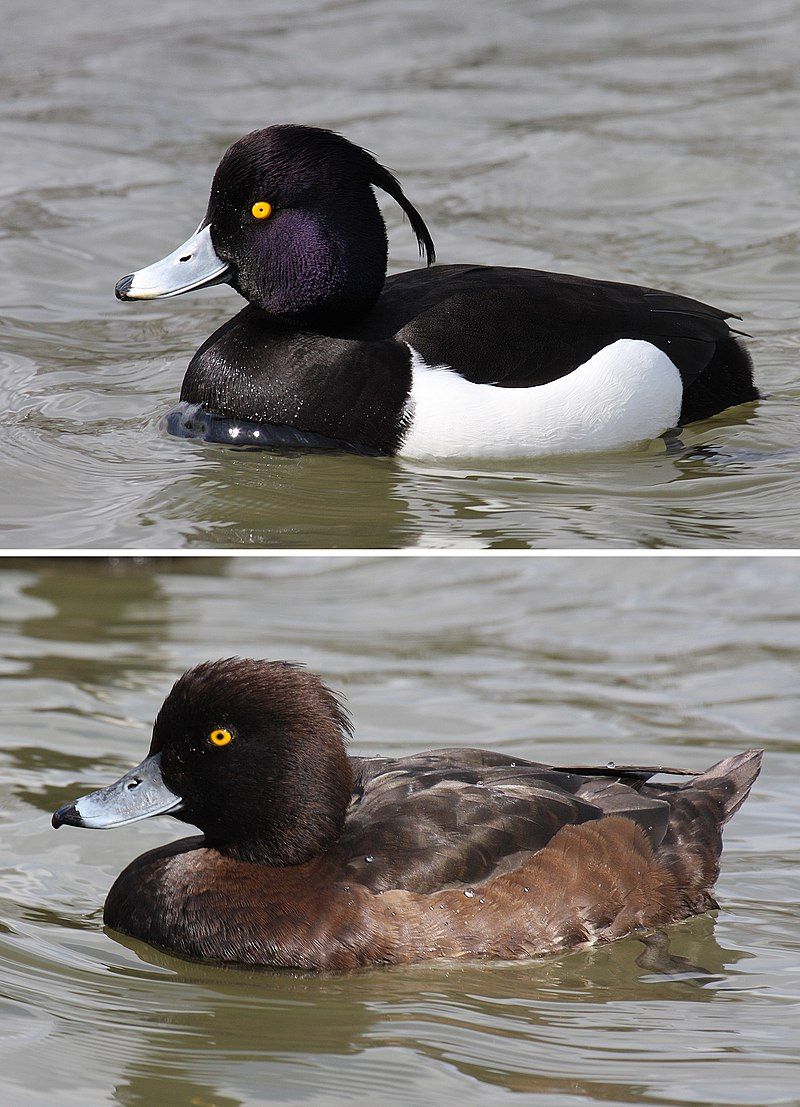
The Tufted Duck (Aythya fuligula) is a small diving duck native to northern Eurasia. It is easily distinguished from other ducks by its distinctive tuft of black feathers on its head. The scientific name for the Tufted Duck is derived from two sources.
The first source is Ancient Greek aithuia, which refers to an unidentified seabird mentioned by classical authors such as Hesychius and Aristotle.
The second source is Latin, from the words fuligo, meaning “soot,” and gula, meaning “throat.” These two terms refer to the Tufted Duck’s black throat feathers. The Tufted Duck has a global population of close to one million birds.
It is mostly found in freshwater wetlands, such as lakes, ponds, and marshes. The Tufted Duck feeds on aquatic plants and small invertebrates and is an important species in the aquatic ecosystem.
The Tufted Duck is a popular game bird and is hunted for sport in many parts of the world. However, the species is listed as a species of least concern by the International Union for Conservation of Nature (IUCN).
This is because the population is still relatively stable, and there is no immediate threat of extinction.
| Kingdom | Animalia |
| Phylum | Chordata |
| Class | Aves |
| Order | Anseriformes |
| Family | Anatidae |
| Genus | Aythya |
| Species | A. fuligula |
18. Common Shelduck
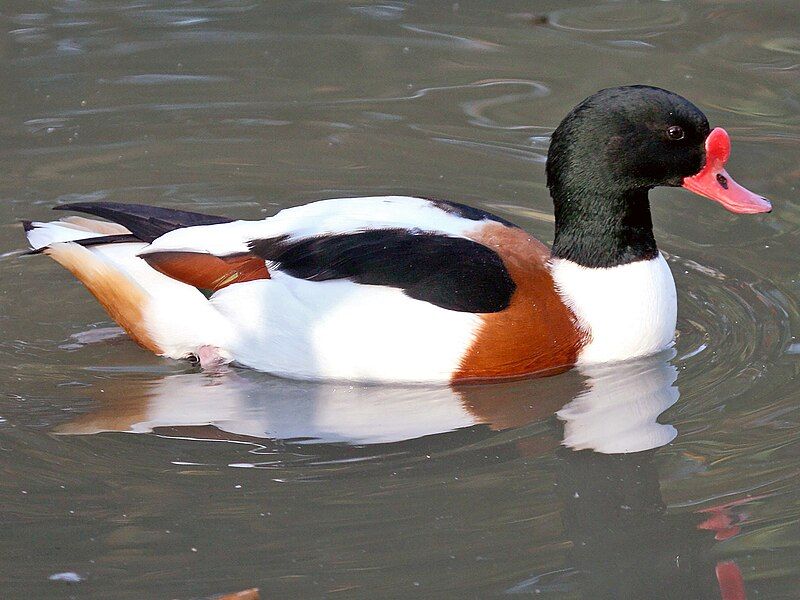
The common shelduck is a species of waterfowl that is part of the shelduck genus, Tadorna. This species is widespread and quite common throughout the Palearctic region of Europe and Siberia.
During the breeding season, it can be found living in temperate areas, however, during the winter it migrates to subtropical regions. In some cases, the common shelduck can also be spotted in the Maghreb region in the wintertime.
This species is well adapted to a variety of habitats, including wetlands, mudflats and coastal areas, and is also able to adapt to human-altered environments, such as agricultural fields and gravel pits.
They feed on a variety of mollusks, crustaceans, aquatic insects, and small fish, as well as grains and seeds. The common shelduck is an important species in the Palearctic region due to its wide distribution and its role in the food web.
| Kingdom | Animalia |
| Phylum | Chordata |
| Class | Aves |
| Order | Anseriformes |
| Family | Anatidae |
| Genus | Tadorna |
| Species | T. tadorna |
19. Gadwall
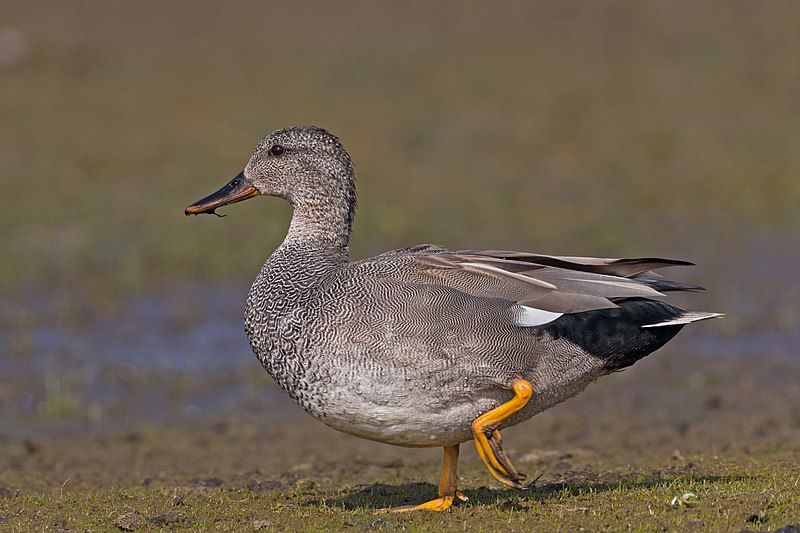
The gadwall is a species of dabbling duck in the family Anatidae, which also includes swans, geese, and ducks. It is a common and widespread species found all over the world.
Gadwalls are medium-sized ducks, with males typically measuring between 17 and 20 inches in length and weighing between 1.3 and 2.7 pounds. Females are slightly smaller, measuring between 16 and 19 inches in length and weighing between 1 and 2.2 pounds.
Their plumage is mainly grey and brown, with white patches on their wings and bellies, making them easy to identify. Gadwalls prefer shallow waters, such as marshes, ponds, and lakes, where they feed on aquatic vegetation, small fish, and invertebrates.
They often congregate in large flocks and are usually found in areas with abundant vegetation. They breed in late spring and summer, and the female builds a nest of vegetation near water, where she lays up to 8 eggs.
The female incubates the eggs for 24 to 28 days before they hatch. Gadwalls are believed to be among the oldest species of waterfowl, having been around for millions of years.
They are also considered to be an important indicator species in wetlands, providing scientists with valuable information about the health of their habitats. As a result, gadwalls are protected by the Migratory Bird Treaty Act, which makes it illegal to hunt or harass them.
| Kingdom | Animalia |
| Phylum | Chordata |
| Class | Aves |
| Order | Anseriformes |
| Family | Anatidae |
| Genus | Mareca |
| Species | M. strepera |
20. Garganey
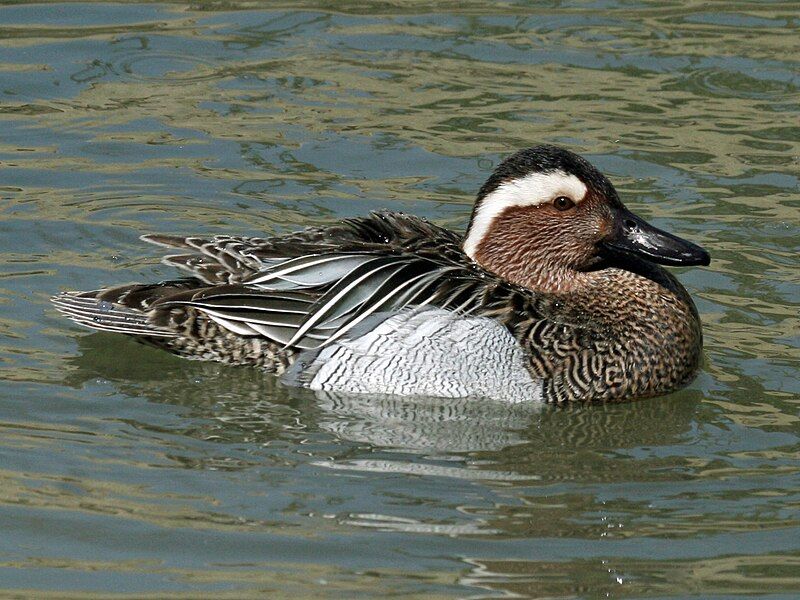
The garganey is a species of small dabbling duck that is found in much of Europe and the Palearctic region. It has a migratory pattern that sees the entire population of the species travel to more southern regions during the winter in the Northern Hemisphere.
These regions include southern Africa, India, Bangladesh, and Australasia. Here, large flocks of the species can be found throughout the winter months.
The garganey is an important species in many of these regions, providing a food source for other animals and a valuable part of the local ecosystem.
| Kingdom | Animalia |
| Phylum | Chordata |
| Class | Aves |
| Order | Anseriformes |
| Family | Anatidae |
| Genus | Spatula |
| Species | S. querquedula |
21. Northern Shoveler
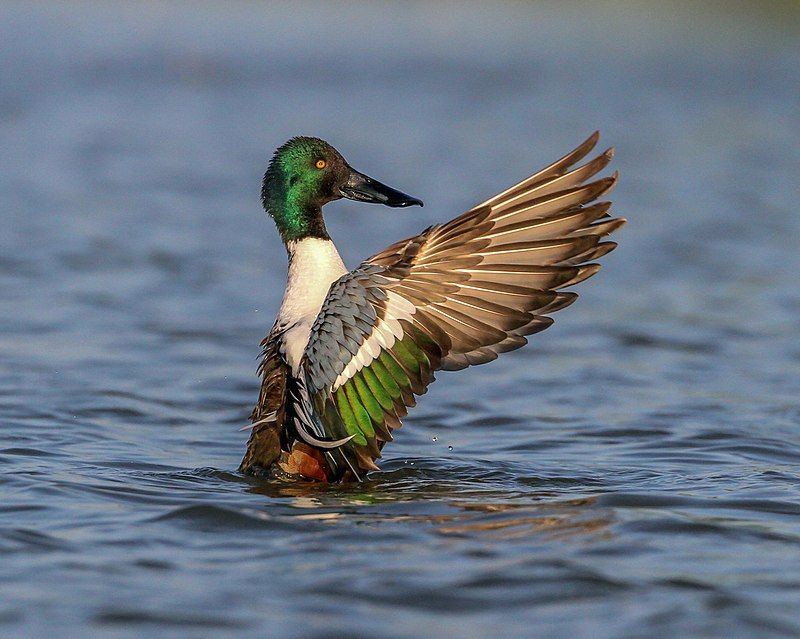
The northern shoveler is a species of duck that is commonly found in many areas of the world. It is especially abundant in northern Europe and North America, where it breeds in the summer months.
During the winter, the northern shoveler migrates to southern Europe, the Indian subcontinent, Southeast Asia, Central America, the Caribbean, and northern South America. The northern shoveler is often referred to as the “shoveler” in Britain.
It is a medium-sized duck, with a long bill and a large head. The male northern shoveler has a bright green head with a brownish-blue breast and a white belly.
The female is a duller brown color and has a white stripe running along its back. The northern shoveler feeds primarily on aquatic plant material, such as leaves, stems, and seeds. It also eats small insects, crustaceans, mollusks, and other aquatic animals.
The northern shoveler is commonly found in wetlands and shallow lakes, where it can find a variety of food sources. The northern shoveler is an important part of many wildlife habitats, as it helps to keep aquatic plant populations in balance.
It also helps to spread seeds and to maintain healthy aquatic ecosystems. This species of duck is also a popular game bird and is hunted in many areas.
| Kingdom | Animalia |
| Phylum | Chordata |
| Class | Aves |
| Order | Anseriformes |
| Family | Anatidae |
| Genus | Spatula |
| Species | S. clypeata |
22. Mute Swan
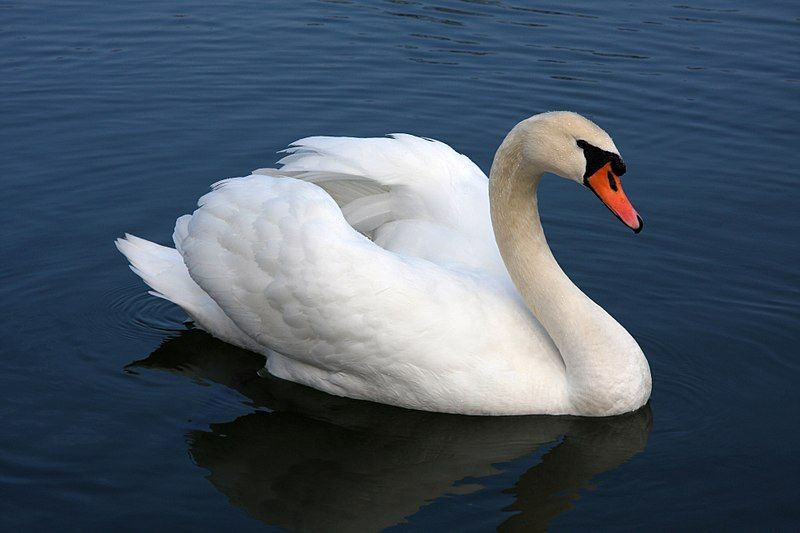
The mute swan is a species of swan and a member of the Anatidae family, which is a group of waterfowl. It is native to much of Eurosiberia, which includes parts of Eastern Europe, Northern Asia, and the Arctic, as well as the far north of Africa.
This species of swan is found in marshlands, lakes, and rivers, and is known for its graceful movements on the water. Mute swans are easily recognizable by their bright white feathers and orange bills.
They are also known for their loud honking sound that they make when disturbed, although they are generally quite calm and non-aggressive. They are omnivorous, eating both plant and animal matter, and can be spotted in the wild grazing in meadows and paddocks.
They typically mate for life and form strong family bonds, making them very popular in parks and gardens.
| Kingdom | Animalia |
| Phylum | Chordata |
| Class | Aves |
| Order | Anseriformes |
| Family | Anatidae |
| Genus | Cygnus |
| Species | C. olor |
23. Common Moorhen
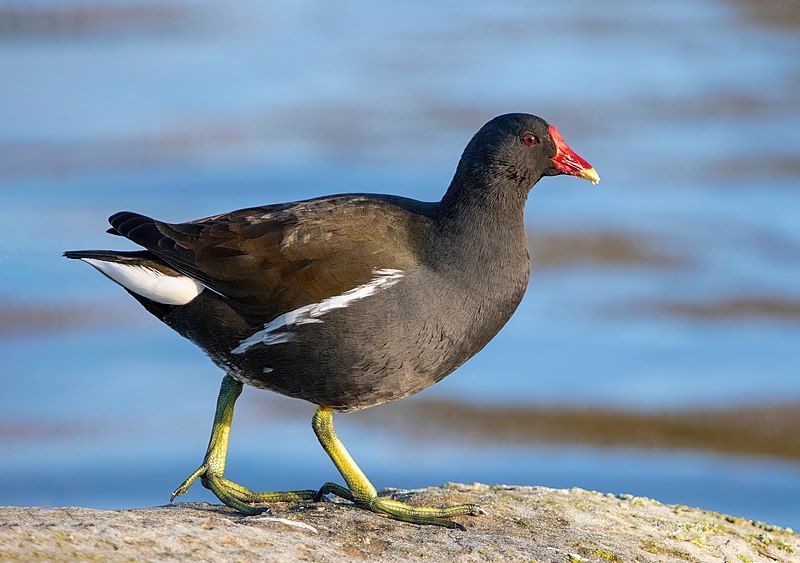
The Common Moorhen, also known by its other common names the Waterhen and Swamp Chicken, is a bird species in the rail family. These birds can be found across many parts of the Old World, from Europe, to Africa, and even Asia.
Common Moorhens prefer to live in well-vegetated wetlands such as marshes, ponds, and canals. They thrive in these environments, taking advantage of the food and shelter that the vegetation provides.
This species is adapted to living in watery areas, as it has webbed feet that allow it to swim gracefully through the water. When it is not swimming, the Common Moorhen is usually found walking around the edges of the water, looking for food.
Common Moorhens are omnivorous, and their diet consists of aquatic insects, small fish, amphibians, crustaceans, and aquatic vegetation. They are also known to eat grains, seeds, and other types of plant matter.
The Common Moorhen is a popular bird species, particularly among birdwatchers, and it is quite easy to spot in its preferred habitat. Its colorful plumage, loud calls, and interesting behavior make it an enjoyable bird to watch.
| Kingdom | Animalia |
| Phylum | Chordata |
| Class | Aves |
| Order | Gruiformes |
| Family | Rallidae |
| Genus | Gallinula |
| Species | G. chloropus |
24. Cattle Egret
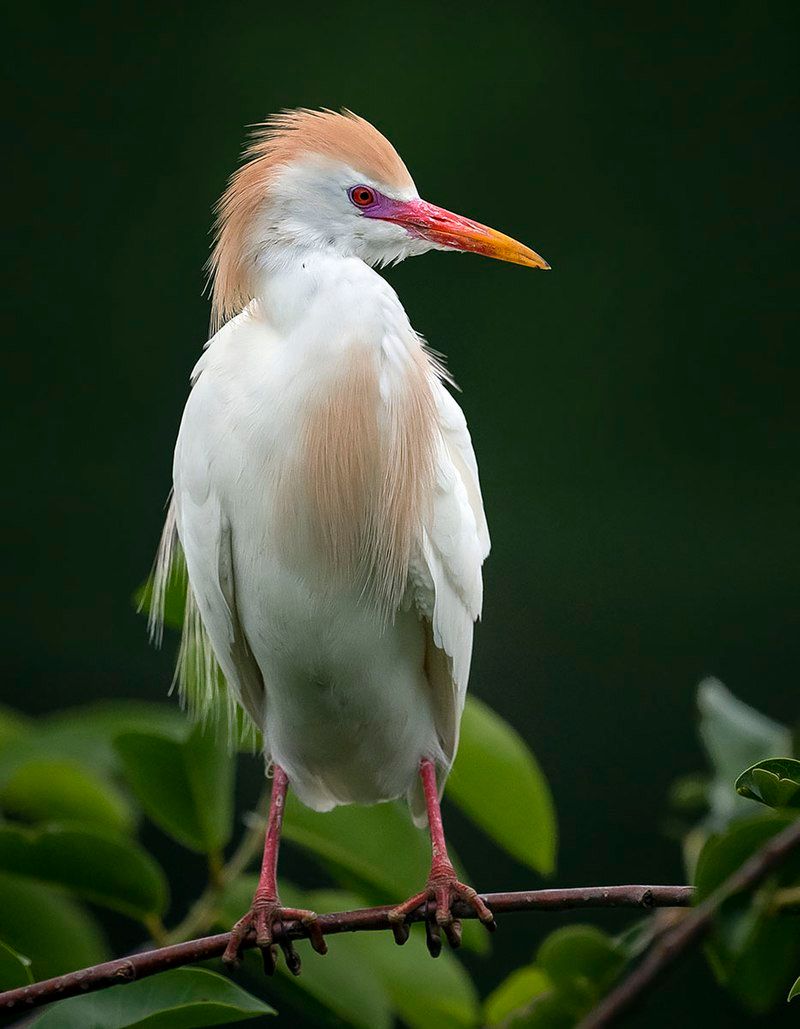
The cattle egret is a species of heron found in various parts of the world, from the tropics to subtropics and even warm-temperate zones. It is the only bird belonging to the monotypic genus Bubulcus, which means it is the only species in this genus.
However, some experts have classified the subspecies of the cattle egret as two distinct species: the western cattle egret and the eastern cattle egret. As a result, this bird has a wide global distribution, making it one of the most widespread heron species in the world.
The cattle egret is known for being a highly adaptable species, able to inhabit a variety of habitats, from wetlands to pastures and even urban areas. This bird is also capable of foraging in fields, making it a beneficial species for farmers.
It feeds on insects, small reptiles, crustaceans, and other small animals, which it finds in wetlands, shallow water bodies, and even dry fields. The cattle egret is a medium-sized heron, with a white or grey plumage and yellow bill.
Its legs are usually yellow or black, depending on the subspecies. This species is also known for forming large flocks during migration, which can be up to several thousand birds.
In conclusion, the cattle egret is a cosmopolitan species of heron found in various parts of the world. It is a highly adaptable species and is known for forming large flocks during migration.
It is the only bird belonging to the monotypic genus Bubulcus, but some experts classify its two subspecies as distinct species.
| Kingdom | Animalia |
| Phylum | Chordata |
| Class | Aves |
| Order | Pelecaniformes |
| Family | Ardeidae |
| Genus | Bubulcus |
| Species | B. ibis |
Conclusion
Birds in Pisa are an essential part of the city’s environment, culture, and history.
They can be seen in many parts of the city, including the famous Leaning Tower of Pisa, and provide a unique way to observe the wildlife of the area.
From colorful parrots and majestic swans to the common pigeons and seagulls, the birds of Pisa add an extra layer of beauty to the city.